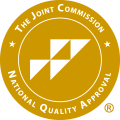One of the most difficult aspects about inhalant addiction treatment is knowing when you need help. By understanding how inhalants work and how treatment can be effective, you or your loved one are one step closer to recovery. Addiction Recovery Choice works with a large network of addiction treatment centers across the country that offer expert treatment for inhalant addiction.
Learn More About Inhalant Addiction
Inhalants are breathable chemical vapors that produce psychoactive (mind-altering) effects. A variety of products commonplace in the home and in the workplace contain substances that can be inhaled. Many people do not think of these products, such as spray paint, glues, and cleaning fluids, as drugs because they were never meant to be used to achieve an intoxicating effect. Yet, young children and adolescents can easily obtain them and are among those most likely to abuse these extremely toxic substances. Parents should monitor household products closely to prevent accidental inhalation by very young children. Inhalants fall into the following categories:
Solvents
Industrial or household solvents or solvent-containing products, including paint thinners or solvents, degreasers (dry-cleaning fluids), gasoline, and glue, art or office supply solvents, including correction fluids, felt-tip-marker fluid, and electronic contact cleaners
Gases
Gases used in household or commercial products, products, including butane lighters and propane tanks, whipping cream aerosols or dispensers (whippets), and refrigerant gases. Household aerosol propellants and associated solvents in items such as spray paints, hair or deodorant sprays, and fabric protector sprays Medical anesthetic gases, such as ether, chloroform, halothane, and nitrous oxide (“laughing gas”)
Nitrites
Aliphatic nitrites, including cyclohexyl nitrite, which is available to the general public; amyl nitrite, which is available only by prescription; and butyl nitrite which is now an illegal substance.
Health Hazards
Although they differ in makeup, nearly all abused inhalants produce short-term effects similar to anesthetics, which act to slow down the body’s functions. When inhaled via the nose or mouth into the lungs in sufficient concentrations, inhalants can cause intoxicating effects. Intoxication usually lasts only a few minutes. However, sometimes users extend this effect for several hours by breathing in inhalants repeatedly. Initially, users may feel slightly stimulated. Successive inhalations make them feel less inhibited and less in control. If use continues, users can lose consciousness.
Sniffing highly concentrated amounts of the chemicals in solvents or aerosol sprays can directly induce heart failure and death within minutes of a session of prolonged use. This syndrome, known as “sudden sniffing death,” can result from a single session of inhalant use by an otherwise healthy young person. Sudden sniffing death is particularly associated with the abuse of butane, propane, and chemicals in aerosols.
High concentrations of inhalants also can cause death from suffocation by displacing oxygen in the lungs and then in the central nervous system so that breathing ceases. Deliberately inhaling from an attached paper or plastic bag or in a closed area greatly increases the chances of suffocation. Even when using aerosols or volatile products for their legitimate purposes (i.e., painting, cleaning), it is wise to do so in a well-ventilated room or outdoors.
Chronic abuse of solvents can cause severe, long-term damage to the brain, the liver and the kidneys. Harmful irreversible effects that may be caused by abuse of specific solvents include:
- Hearing loss – toluene (paint sprays, glues, dewaxers) and trichloroethylene (cleaning fluids, correction fluids)
- Peripheral neuropathies or limb spasms – hexane (glues, gasoline) and nitrous oxide (whipping cream, gas cylinders)
- Central nervous system or brain damage – toluene (paint sprays, glues, dewaxers)
- Bone marrow damage – benzene (gasoline).
Serious but potentially reversible effects include:
- Liver and kidney damage – toluene-containing substances and chlorinated hydrocarbons (correction fluids, dry-cleaning fluids)
- Blood oxygen depletion – organic nitrites (poppers, bold, and rush) and methylene chloride (varnish removers, paint thinners).
- Abuse of amyl and butyl nitrites has been associated with Kaposi’s sarcoma (KS), the most common cancer reported among AIDS patients. Early studies of KS showed that many people with KS had used volatile nitrites. Researchers are continuing to explore the hypothesis of nitrites as a factor contributing to the development of KS in HIV-infected people.
- Extent of Use
Initial use of inhalants often starts early. Some young people may use inhalants as a cheap, accessible substitute for alcohol. Research suggests that chronic or long-term inhalant abusers are among the most difficult drug abuse patients to treat. Many suffer from cognitive impairment and other neurological dysfunction and may experience multiple psychological and social problems.
Monitoring the Future Study (MTF)*
NIDA’s nationwide annual survey of drug use among the Nation’s 8th-, 10th-, and 12th-graders indicates that inhalant use for 8th- and 10th-graders appears to have peaked in 1995, and in 1990 for 12th-graders, and has declined since then. In 2002, lifetime, past year, and past month inhalant use among 8th and 10th-graders was the lowest seen in the history of the survey and the lowest in about 20 years for high school seniors.
In 2002, a persistent pattern of higher rates of use by younger children continued as more 8th-graders than 10th- or 12th- graders said they used inhalants. However, the percentage of 8th-graders who said they had ever used inhalants decreased from 17.1 percent in 2001 to 15.2 percent in 2002. This represents a substantial decline from the peak year of 1995 when 21.6 percent of 8th graders said they had used inhalants during their lifetimes.
National Household Survey on Drug Abuse (NHSDA)**
NHSDA data show that, between 2000 and 2001, the number of people age 12 and older having used inhalants at least once in their lifetime rose by roughly 1.5 million, to over 18 million users. As in 2000, highest past year use was among 14- and 15-year-olds, with 4.2 percent of this population reporting having used inhalants in the year preceding the survey. Inhalant use in the month before the survey was also highest among this age group, at 1.3 percent. Past-month use did not statistically significant increases among 12- and 13-year-olds and 18- and 20-year-olds (both at 0.9 percent in 2001), although it dipped for 16- and 17-year-olds (from 1.0 percent to 0.7 percent).










